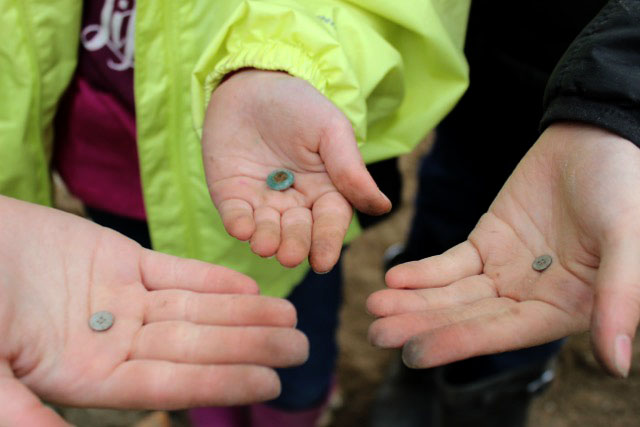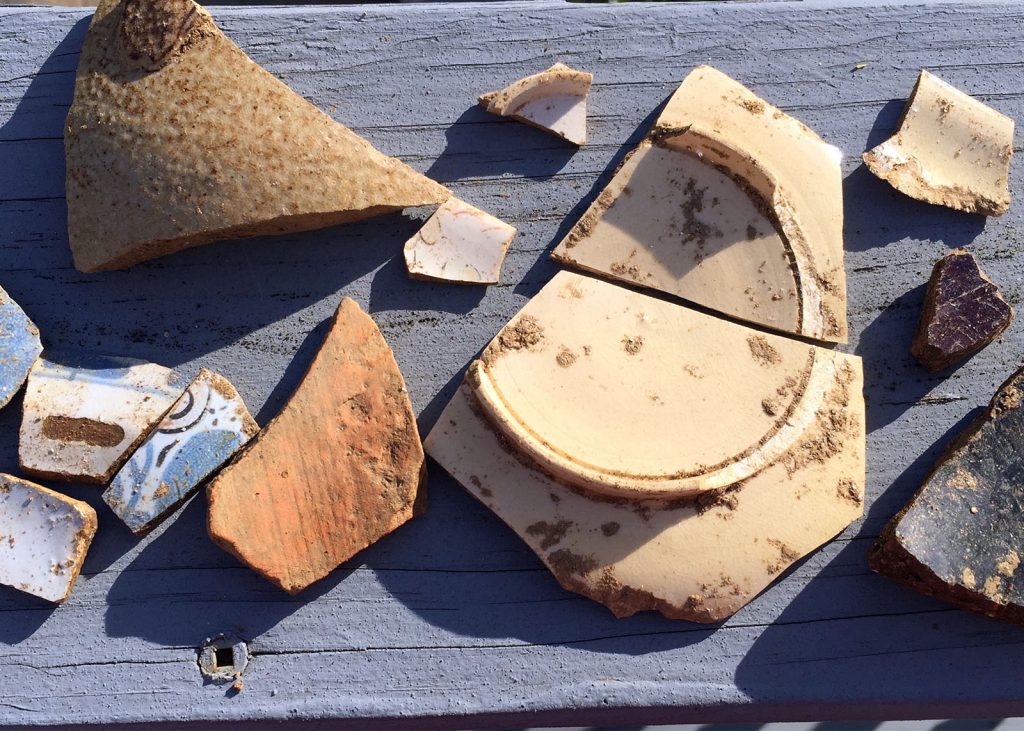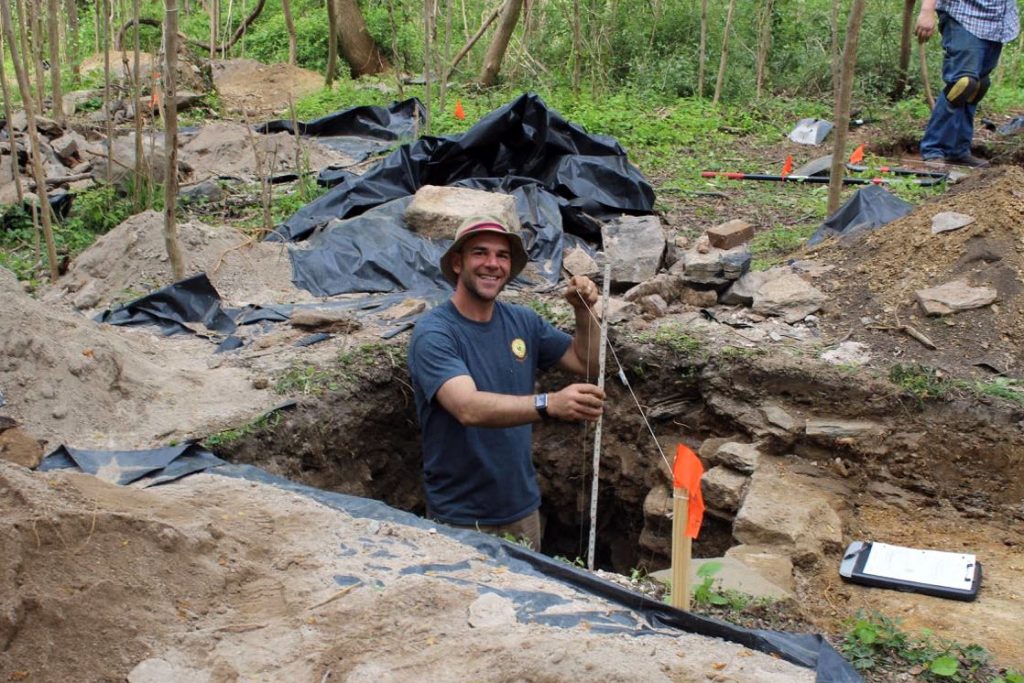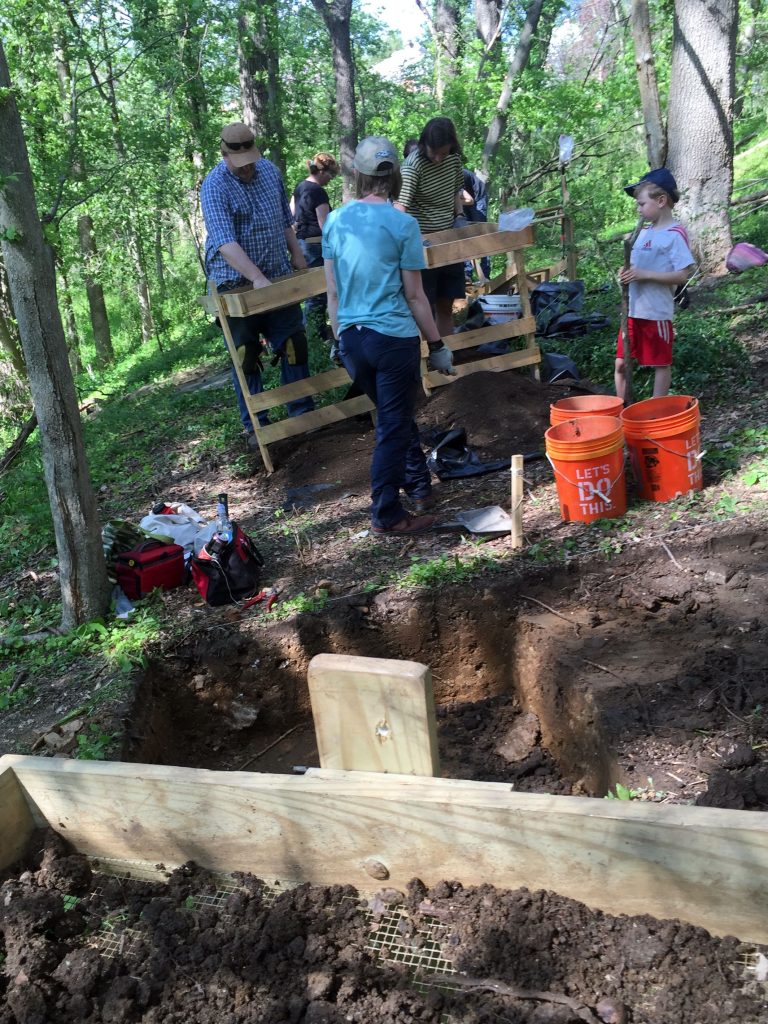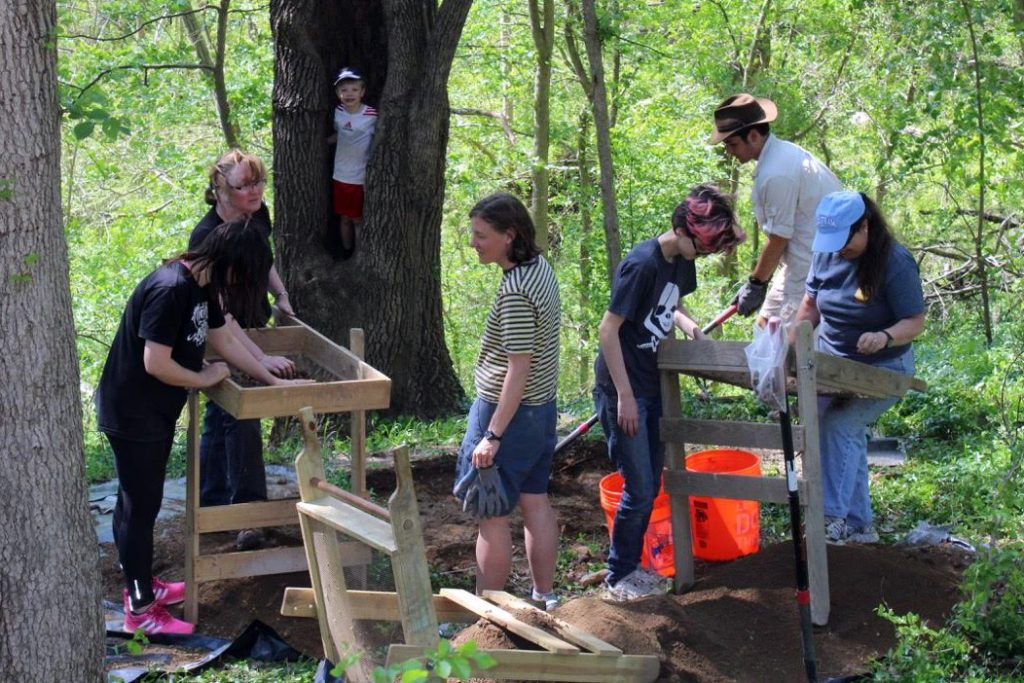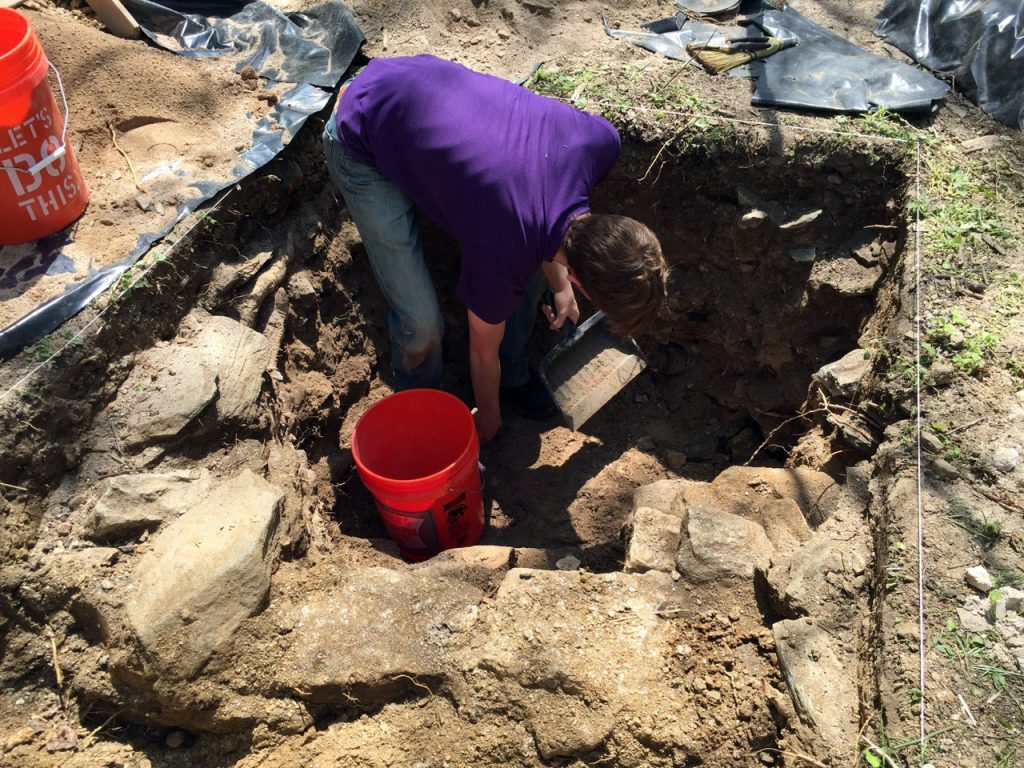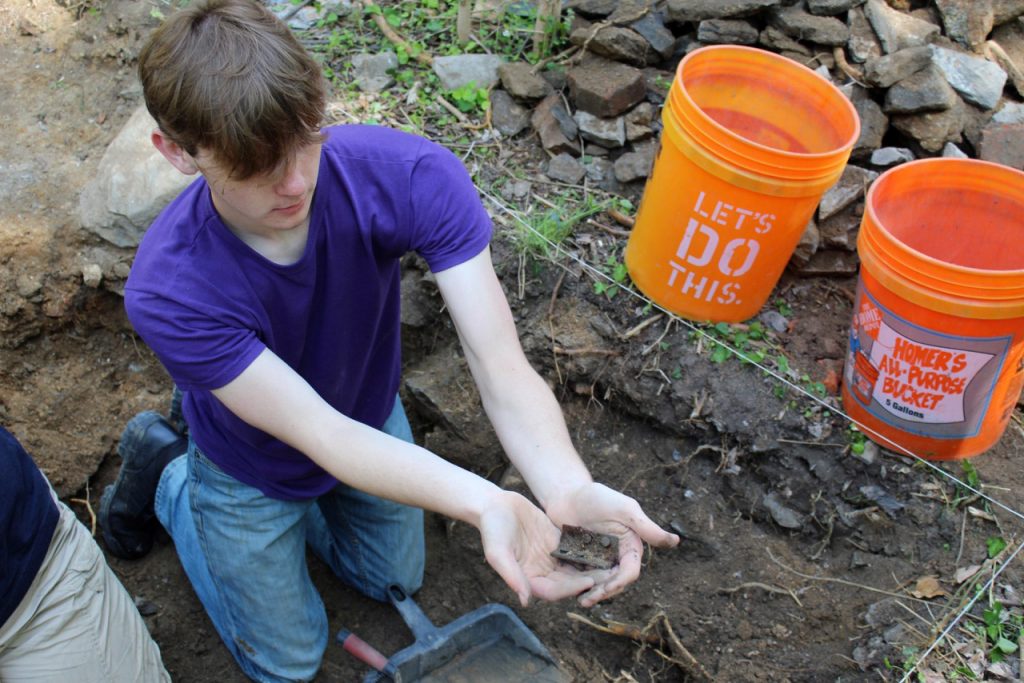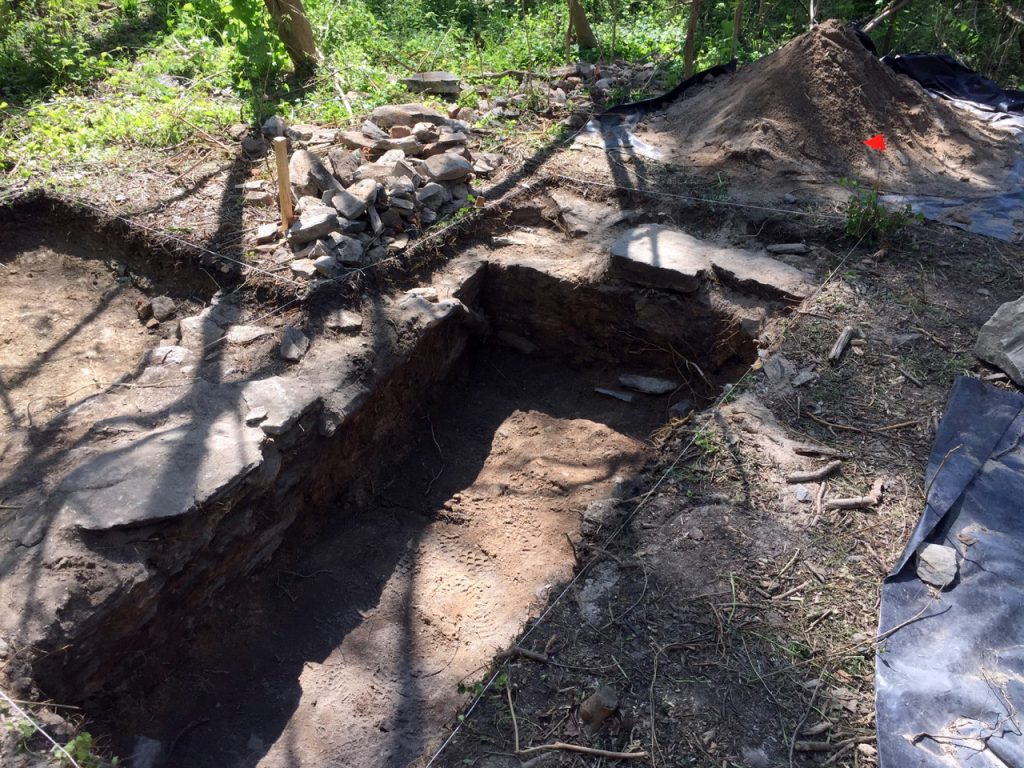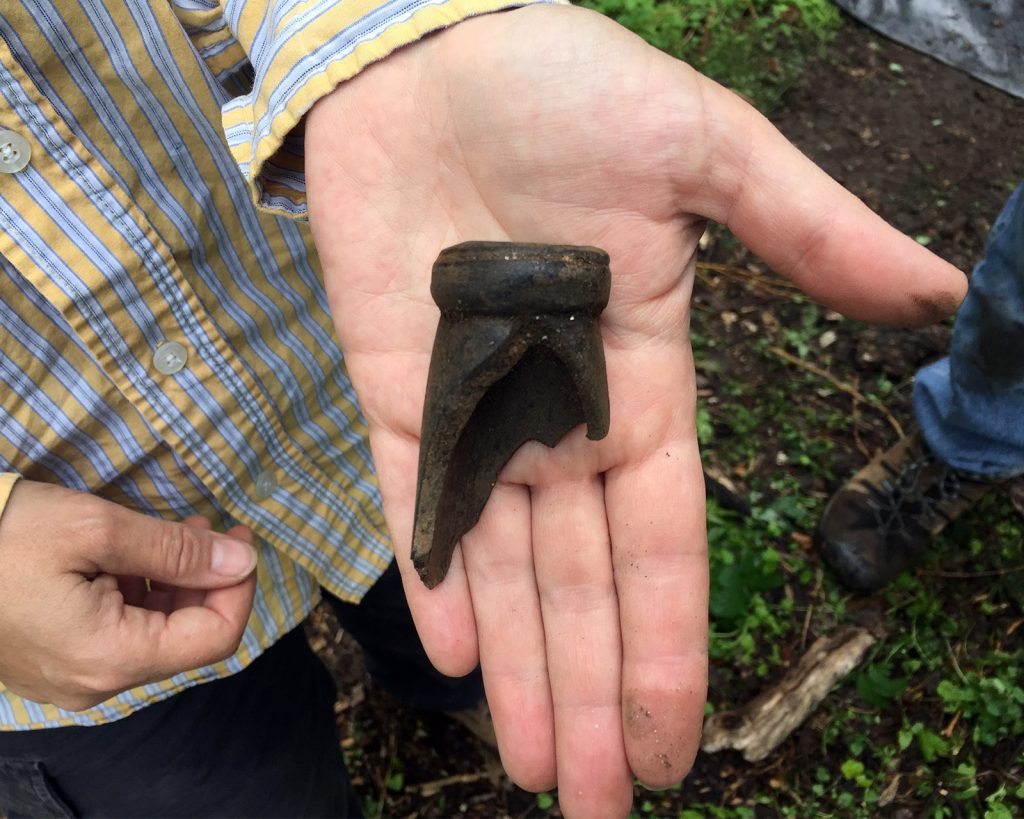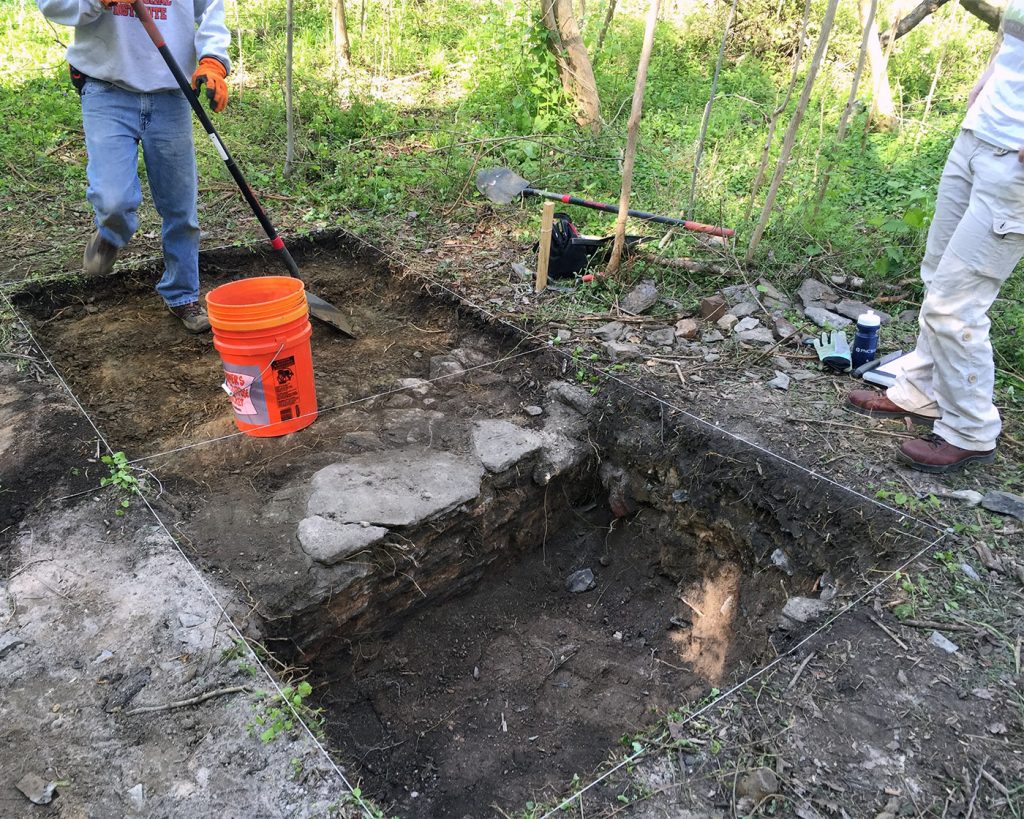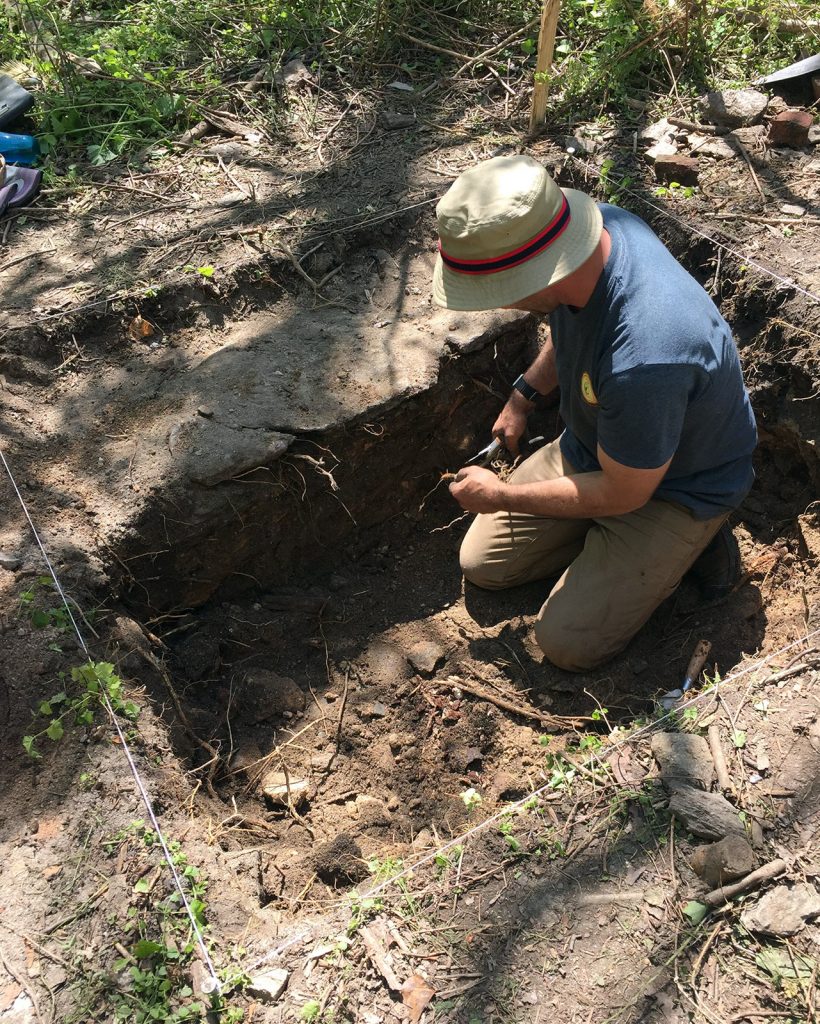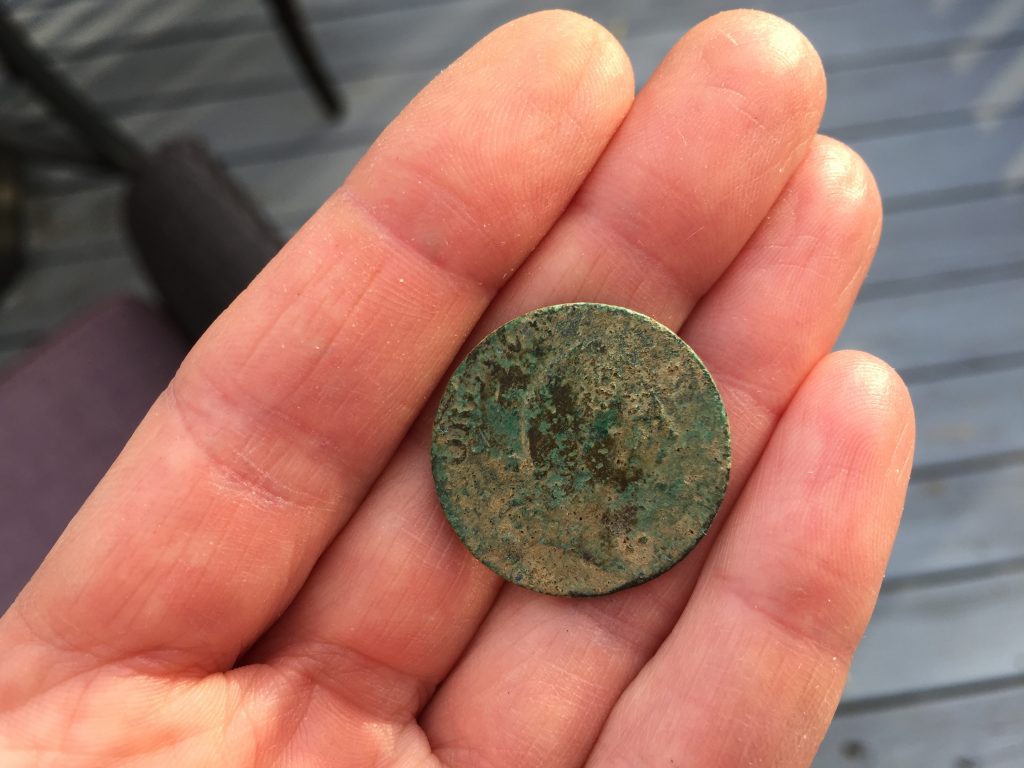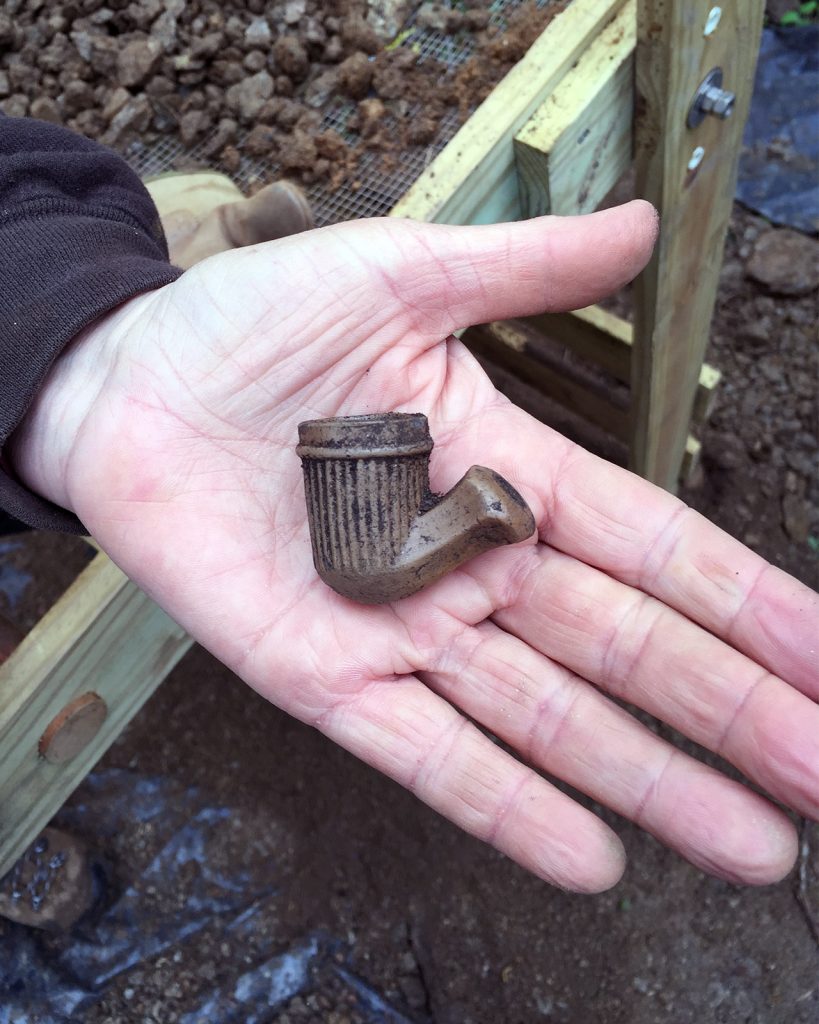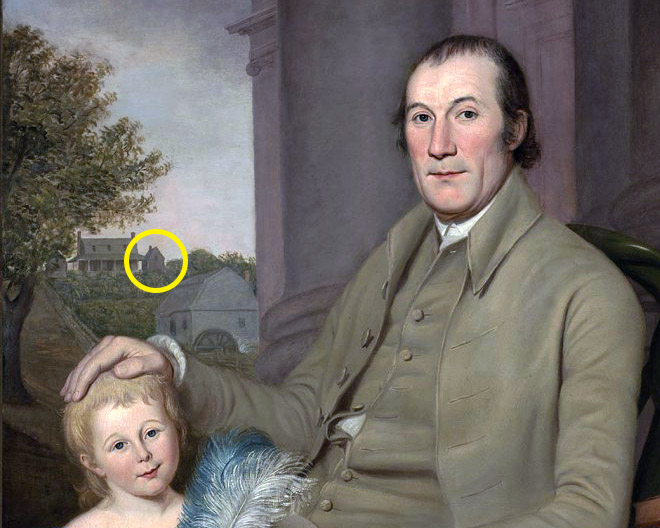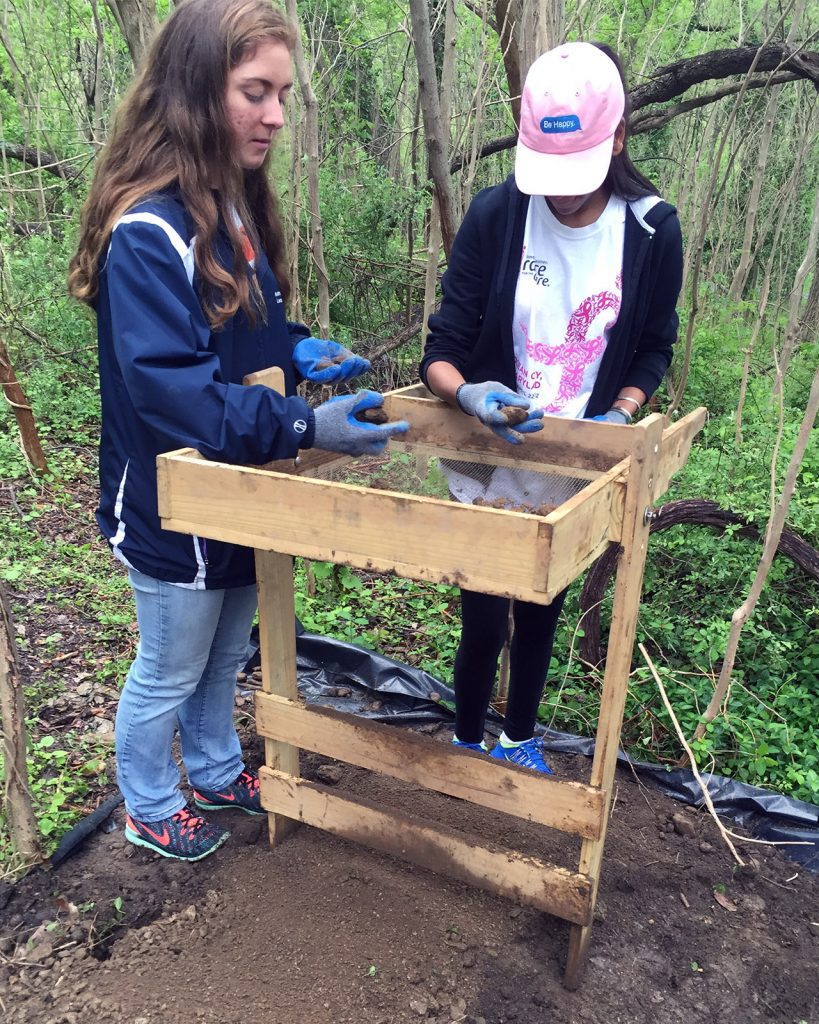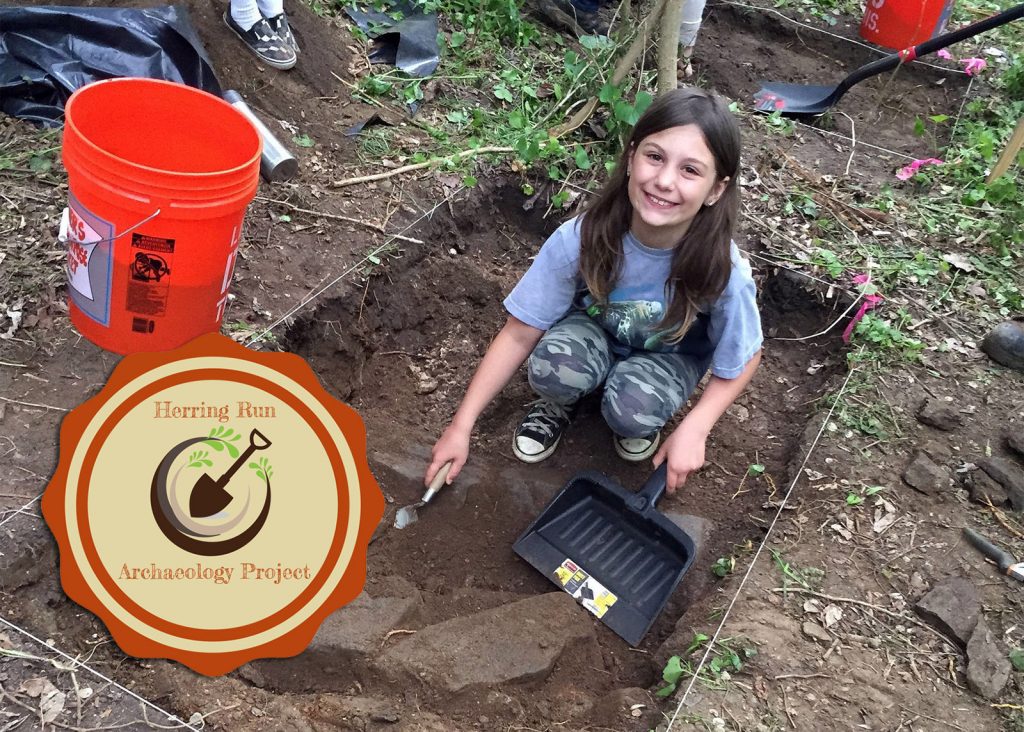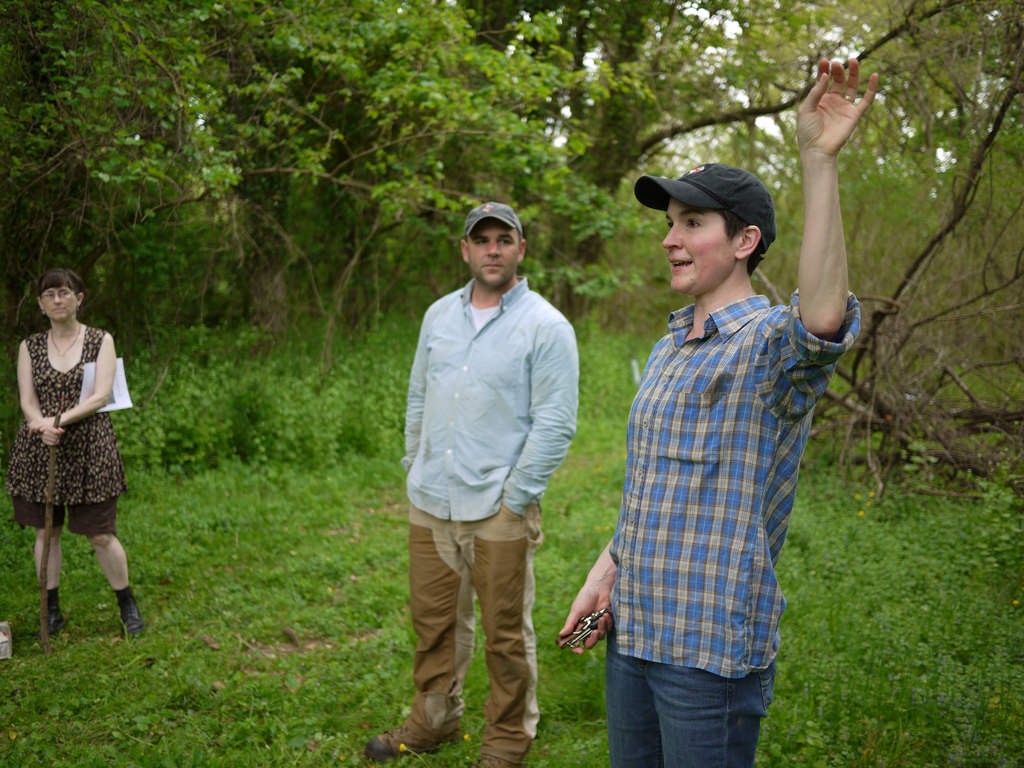Thanks to Lisa Kraus and Jason Shellenhamer for this update from day 5 of the Herring Run Archaeology Project. You can find their updates on our blog, the project website, and on Facebook. You can also subscribe to the project email list to read these posts in your inbox.
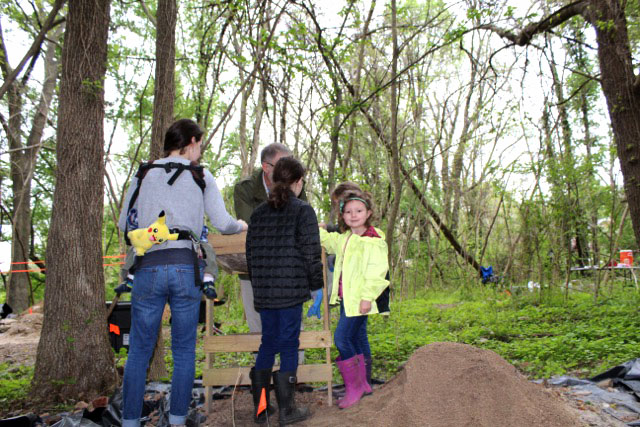
Today we passed the halfway point of the 2016 field season, and the amazing discoveries continue. Building on the success from yesterday, we continued to explore the location of the earliest European occupation of the site.
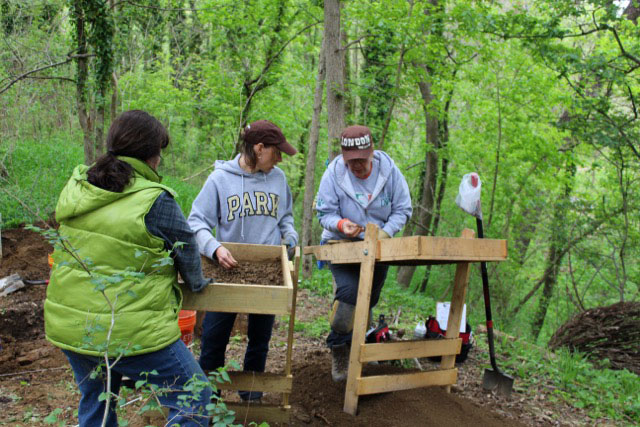
We opened several more test units and, while we have not yet discovered any foundations or structural remains of the circa 1690 home of the Broad family, we continue to find the traces of their presence through the artifacts they left behind. The amazing find from that portion of the site was a beautiful french gunflint discovered by volunteers Ilka and Rosa.

Back at Eutaw House, we continue to complete excavating several unfinished units with the house’s cellar. Today we completed a unit near the northeast corner of the house where we discovered a large collection of bricks on Saturday. During the excavation today, we recovered a large collection of clothing and other personal items including beads, jewelry, and buttons of every make and type: bone, shell, glass, copper and iron. We also found a Belgian one cent piece that dates to 1845 and a pipe stem manufactured by Jan Prince the Netherlands from around the same time period.

At the bottom of the unit, we made yet another interesting discovery, a flagstone floor! This is the only section of the house to have a built floor. All other areas of the cellar contained only a dirt and bedrock bottom. The presence of the abundant brick, stone floor and variety of buttons leads us to think that this portion of the house may have served as the Eutaw house’s laundry and the workplace of several of the family’s enslaved men and women including Venus Tilghman.


